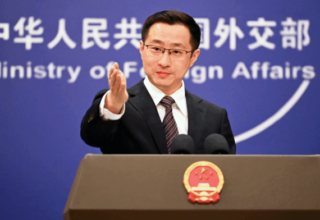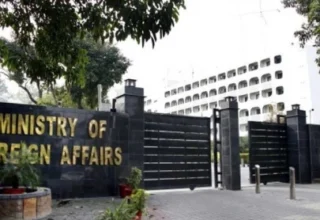
ZHUHAI, China – Participants at the 3rd 21st Century Maritime Silk Road have resolved to further media cooperation between partner states and to help develop a community of shared destiny for the mankind.
3rd 21st Century Maritime Silk Road International Communication Forum was held on 22nd October in Zhuhai, Guangdong, China. The Forum was co-hosted by China Media Group and the People’s Government of Guangdong Province, with a theme on “Construction of the GBA promotes the communication along the Maritime Silk Road”.
Foreign media group, which was participating in the interview event of the “2019 Journalists from the Belt and Road Countries Convene in GBA” was also invited to attend this event.
Member of the Editing Affairs Committee of China Media Group Mr. Hu Bangsheng said his group is willing to strengthen and deepen cooperation with media counterparts from other nations and regions to optimize international communication, share the dividend from the development of the GBA and promote the prosperity of the country’s silk roads.

The third 21st Century Maritime Silk Road Forum on China (Guangdong) International Communication, Information Office of the People’s Government of Guangdong Province, together with CRI Online, was held the activity of “2019 Journalists from the Belt and Road Countries Convene in GBA” from Oct. 17th to 23rd, 2019.
A total of 15 journalists from 14 countries including Afghanistan, Pakistan, Maldives, Bangladesh, Nepal, Sri Lanka, India, the Philippines, Cambodia, Laos, Mongolia, Myanmar, Fiji and Tonga visited Shenzhen, Jiangmen, and Zhuhai, through the external perspective and overseas communication channels, to demonstrate the measures and achievements of Guangdong in promoting the development of GBA and participating in the construction of the Belt and Road, and fully to demonstrate GBA and China’s economic and social development, as well as the bright future and great potential for opening up.
The journalist visited Qianhai pilot free trade zone which is one the three pilot free trade zones in China. Qianhai functions as a window for China’s future development. From almost a blank paper in 7 years ago, Qianhai, which started from scratch, now has over 163,890 registered enterprises, ranking the first among all the Pilot Free Trade Zone in China.
According to statistics, in 2018, the enterprise added value in Qianhai reached RMB 254.9 billion and the tax revenue was RMB 44.6 billion. The actual utilization of foreign capital exceeded 4.5 billion US dollars, accounting for half of Shenzhen and nearly 3% of China.
The Deputy Director of the Management Committee of Qianhai Shekou Free Trade Zone Mr. Wang Jinxia said that Qianhai is also a demonstration area for close cooperation between Guangdong, Hong Kong and Macao. By the end of September this year, 11,877 Hong Kong-funded enterprises had registered here with a registered capital of over RMB 1.2 trillion.
He said that the benefits of Hong Kong-funded enterprises in Qianhai are very good, providing about 1/4 of the total economic output, and the actual use of foreign capital accounts for 89%. Qianhai is an area where the Hong Kong-funded enterprises are most concentrated and enjoy the fastest development, and it is also the most desirable area for Hong Kong capital. “Our Qianhai Shenzhen-Hong Kong Youth Innovation and Entrepreneur Hub have fostered 193 innovation and entrepreneur teams from Hong Kong, Macao and Taiwan, and have received more than 50,000 young people from Hong Kong to visit and inspect.”
Further, the journalists of mainstream media of 14 countries along the Belt and Road continued to interview in Jiangmen, Guangdong. Having tasted Xinhui dried tangerine peel and learned Heshan Wing Chun, journalists felt excited.
For more than 700 years, Xinhui people have been producing, processing and eating local dried tangerine peel. Usually, they put it into water to boil for drinking, into soup for its fragrance and into dishes for its delicious taste. Therefore, People have special feelings for dried tangerine peel. Xinhui dried tangerine peel is now a National Geographical Indication Protection Product and is included in the Guangdong Intangible Cultural Heritage List.








